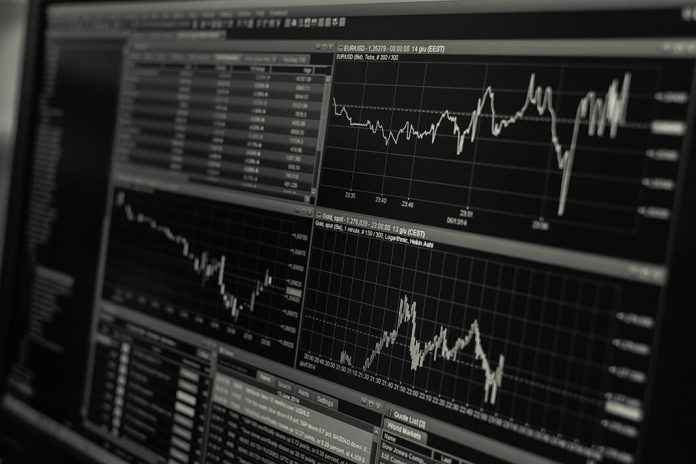For more than two months now, the coronavirus disease 2019 (COVID-19) has wreaked havoc on the U.S. economy and labor market. In total, more than 33 million people have filed for initial unemployment benefits, the official unemployment rate has soared back to Great Depression levels (14.7%), and the longest economic expansion in U.S. history has come to an unceremonious end.
But among the industries impacted by COVID-19, few have felt the adverse effects more so than retail. Although consumers continue to have access to products via direct-to-consumer sales, e-commerce still makes up a relatively small percentage of total revenue for most traditional retailers. That’s left many retail stocks in really bad shape.
IMAGE SOURCE: GETTY IMAGES.
Within recent days and weeks, privately held luxury retailer Neiman Marcus, department store operator Lord & Taylor, and Stage Stores have all filed for bankruptcy protection. Meanwhile, mall anchor J.C. Penney is mulling the prospect of bankruptcy protection, with Macy’s also reeling from a cash crunch. The retail landscape is starting to look like an apocalypse of sorts.
And yet, three names stand out as no-brainer buys, even with the unprecedented (but likely short-term) disruption provided by the coronavirus.
American Eagle Outfitters
Teen and young-adult-focused retailer American Eagle Outfitters (NYSE:AEO) is among the roughly one dozen stocks I opened a position in during the stock market crash in March. It’s a company I’ve followed for the better part of two decades, which has always impressed with its ability to manage inventory and conservatively deploy its capital.
For teen retailers such as this one, COVID-19 has proved to be just another in a long line of major hurdles. Deep-discount retailer Aeropostale went bankrupt in 2016, while posh retailer Abercrombie & Fitch has struggled under the weight of its premium pricing and the occasional PR scandal. Meanwhile, American Eagle has perfectly filled in the middle tier, providing considerably cheaper pricing than Abercrombie, but also allowing its younger customers the luxury of wearing brand-name merchandise.
IMAGE SOURCE: GETTY IMAGES.
Though COVID-19 will end the company’s streak, it had delivered 20 consecutive quarters of positive comparable-store sales growth for its American Eagle locations, with its intimate brand Aerie stores generating 21 consecutive quarters of double-digit same-store sales growth. The plan has been for the company to open dozens of new Aerie locations given their strong organic growth rate. It also doesn’t hurt that L Brands‘ Victoria Secret brand is struggling mightily, which could add more wind to Aerie’s sails.
As noted, this is a company whose management team has dealt with inventory issues exceptionally well. Rarely have we seen markdowns become an issue beyond one or two quarters if the company’s buyers make poor decisions (which happens from time to time). This means less chance of margin erosion relative to its teen-focused peers.
Finally, I appreciate American Eagle Outfitters’ balance sheet. Although the company recently priced a $400 million senior convertible note due in 2025 to provide for added financial flexibility, it entered the COVID-19 pandemic with no debt. It has all the makings of a survivor in the retail space.
TJX Companies
Another retail stock that’s on the verge of greatness is TJX Companies (NYSE:TJX). This is the company behind recognizable retail chains such as T.J. Maxx, Marshalls, and HomeGoods.
The reason I say “on the verge of greatness” is because in February, the company’s board of directors voted to increase its dividend for the 24th consecutive year. If its board decides to follow suit again in 2021, it’ll officially make TJX Companies a Dividend Aristocrat and place it among the elite of elite income stocks. Current buyers can expect to receive about a 1.9% yield. 
IMAGE SOURCE: GETTY IMAGES.
Beyond just being a time-tested business, what makes TJX such a great company is its operating model. TJX understands that consumers have a love affair with brand-name clothing and accessories. Knowing this, it seeks out deeply discounted (and I mean deeply discounted) brand-name inventory to place in its stores. It can then substantially reduce the price on the merchandise it was able to buy in bulk, netting its customers big savings while still generating a huge margin over what it paid. This strategy obviously works, as it’s translated into 24 consecutive years of same-store sales growth. Even with the possibility of this streak ending due to the coronavirus, it’s not a streak I’d ever bet against in the long run.
Furthermore, I find it interesting that TJX Companies continues to resonate with brick-and-mortar consumers. Make no mistake about it, TJX is investing heavily in e-commerce and plans to make shopping at home easier than ever. But in February 2020, the company laid out its long-term plans to build its store count from 4,529 globally to around 6,100, with much of that growth expected to come from opening new Marshalls, T.J. Maxx, and HomeGoods locations in the United States.
With TJX Companies down more than 20% year to date, the time to pounce is now.
Amazon
Go ahead and call me a cheater, but the vast majority of Amazon‘s (NASDAQ:AMZN) sales are derived from its e-commerce segment, which in my view, very much makes it a retail play. In fact, according to eMarketer last June, Amazon is responsible for approximately 38% of all e-commerce in the United States.
Just how dominant is Amazon’s retail segment? Here are some of the more interesting Amazon e-commerce statistics, which, as you might imagine, are constantly evolving:
- Close to a third of all Americans have a Prime membership, with Prime members spending well over $1,000 a year, on average.
- Inclusive of its Marketplace sellers, Amazon has roughly 350 million products to offer consumers.
- According to com, Amazon is nearing almost $300,000 in sales per minute with its e-commerce platform.

IMAGE SOURCE: GETTY IMAGES.
What’s more, with over 150 million Prime members worldwide, Amazon is able to use the fees from these memberships to boost its thin retail margins and undercut brick-and-mortar retailers to drive additional business. It also doesn’t hurt that Prime tends to keep consumers loyal and within its ecosystem of products.
As you might also be aware, owning Amazon stock means having exposure to its fast-growing cloud-services business, Amazon Web Services (AWS). Think of AWS as retail for the cloud infrastructure space. Since the end of 2018, AWS has grown from 11% total sales to 13.5% of total sales in the recently ended first quarter. AWS’s cloud margins run circles around retail margins, which means Amazon’s cash flow is going to shoot to the moon in the years to come.
The growth of AWS, along with its e-commerce dominance, make Amazon a no-brainer retail stock to buy.
















